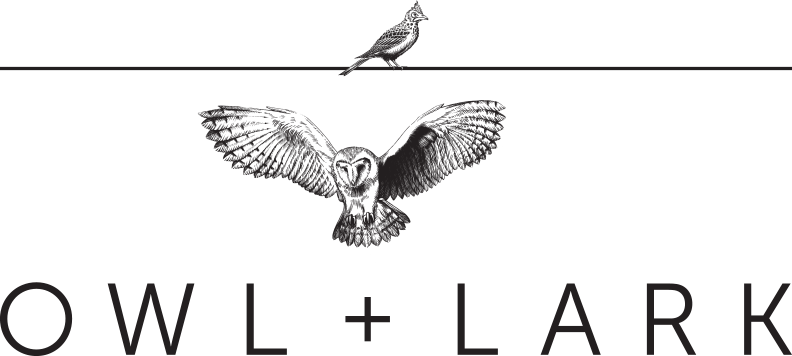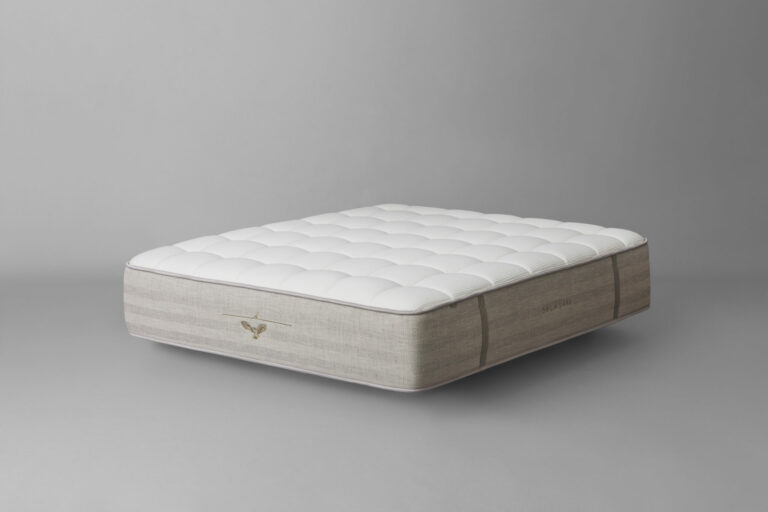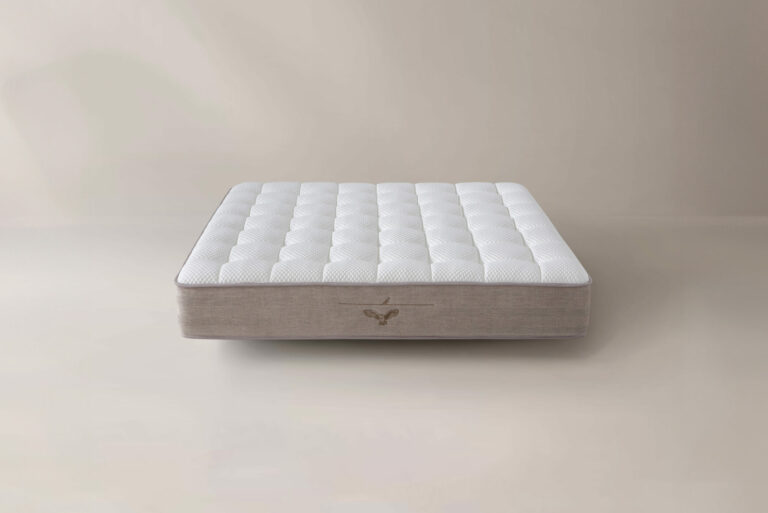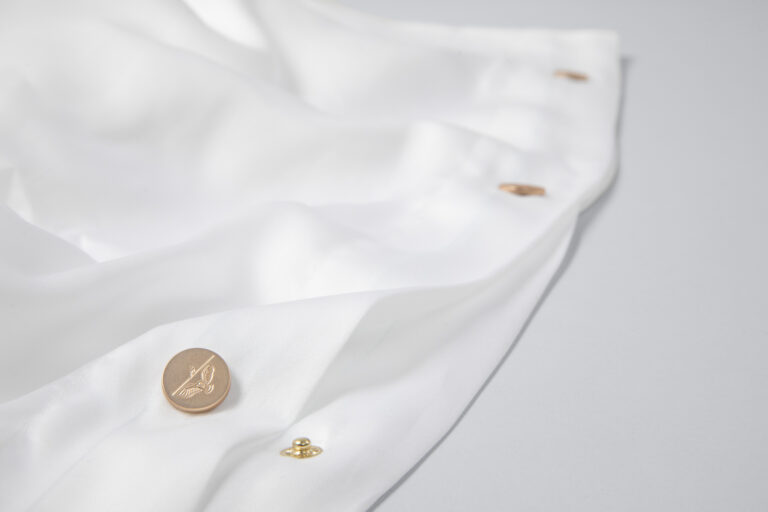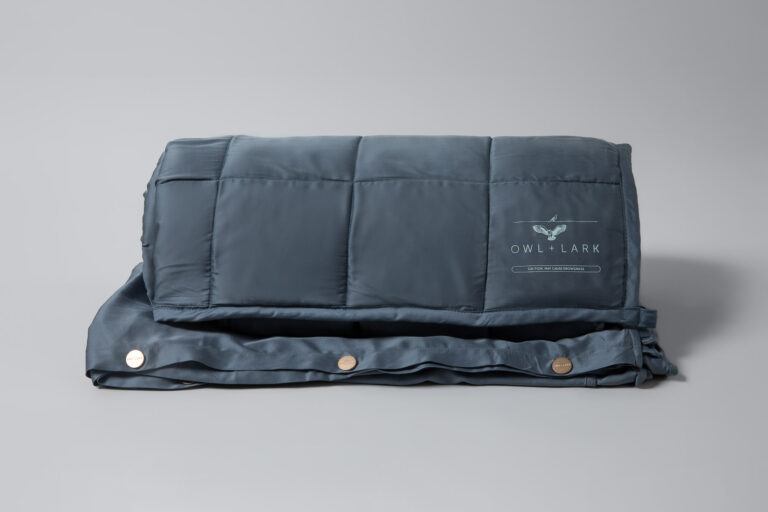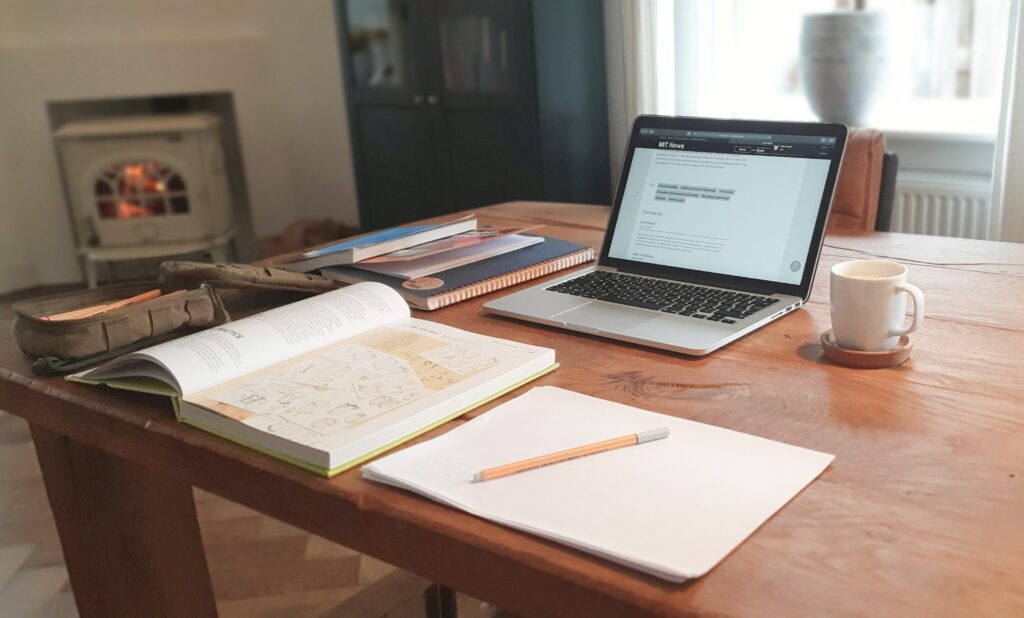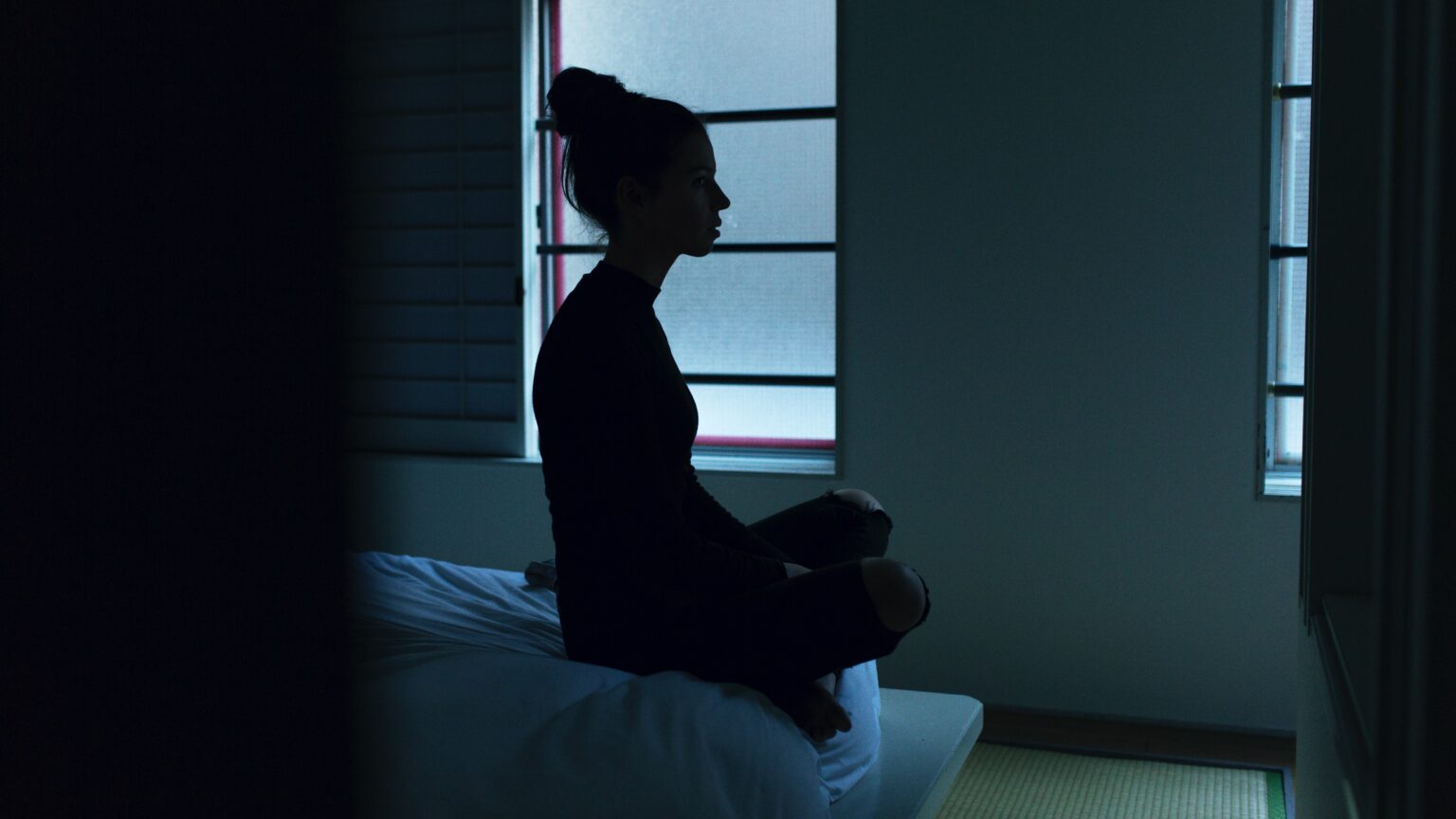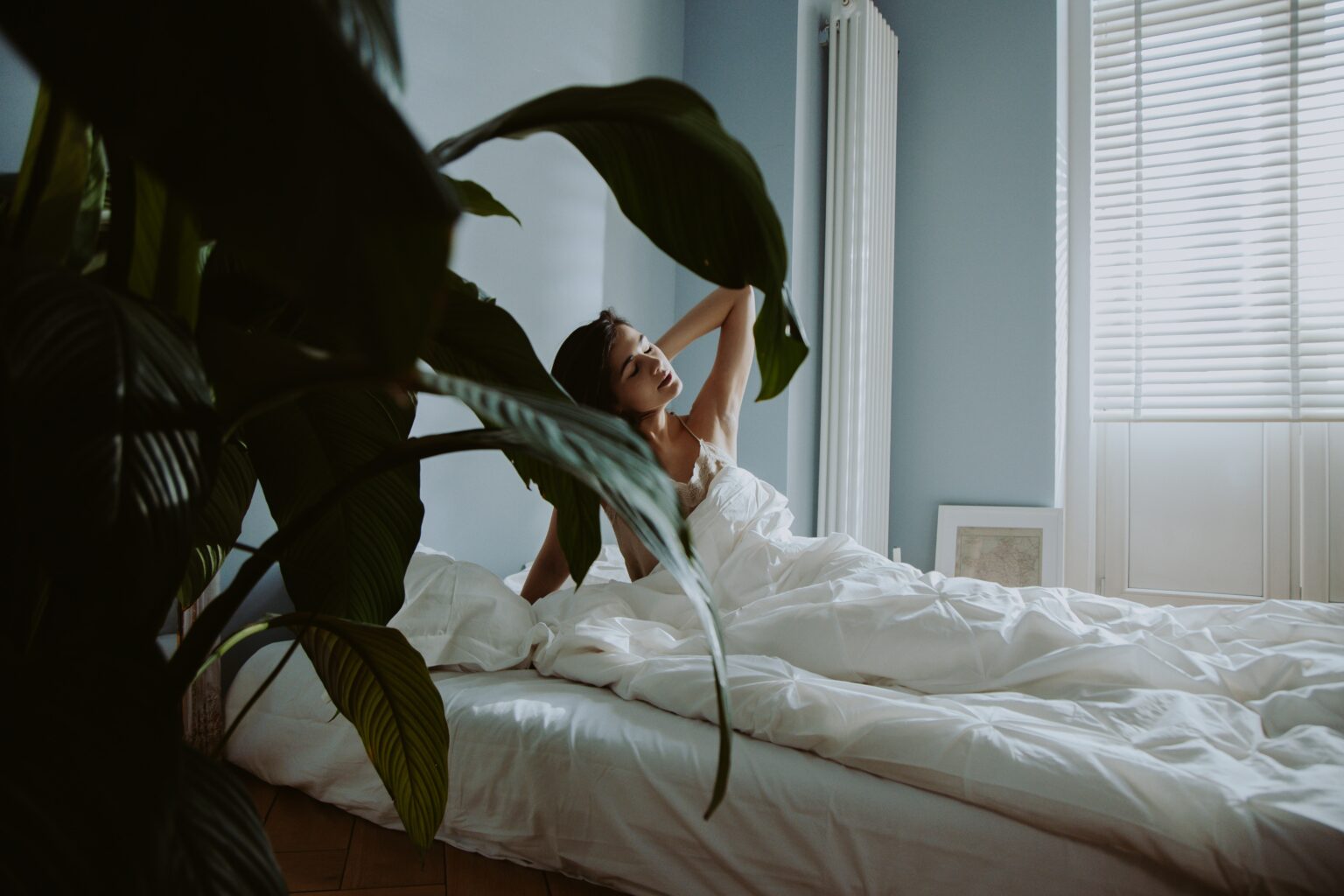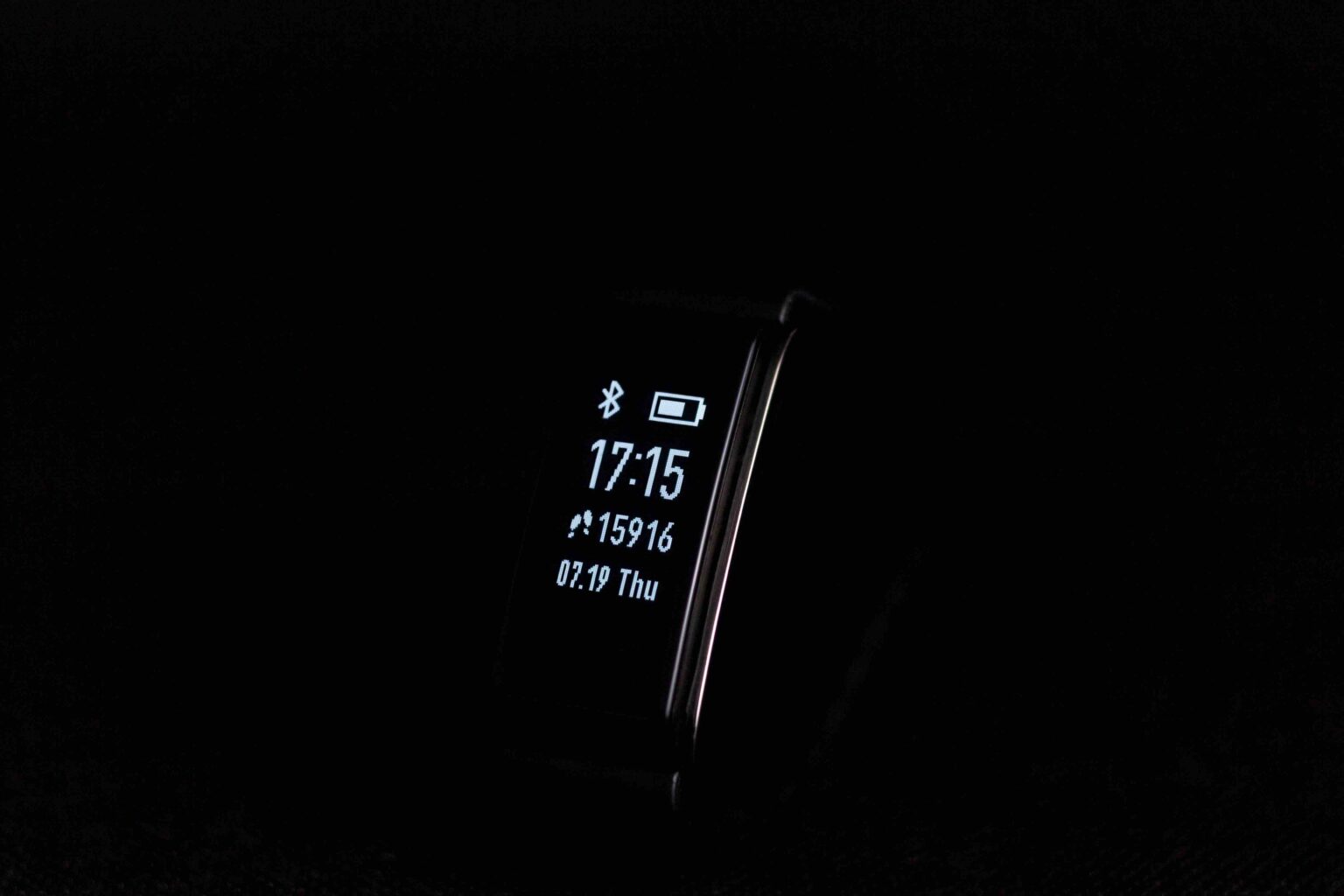More of us are working from home these days. And while our homes are well adapted to the normal tasks of life – cooking, lounging, bathing, storage, they’re not always well-adapted to work.
Having a regular routine – like going into a brightly lit office each morning – exposes us to regular cues such as light and temperature changes that tune our circadian clock, telling us when to get hungry, sleepy or alert over the course of the day. 1
The shift to working at home can disrupt this balance by softening these signals, with effects on sleep, alertness, immunity and everything else in your body that runs on a 24-hour cycle (which is a lot).
At Owl + Lark we’ve been working remotely for several years. We know all too well how the shift from the office to an improperly balanced home-work setup can interfere with your rhythms. But as we’re fanatical about sleep and circadian science we set out to fix the problem.
Here are five steps to taking control of your home working environment that can improve your circadian cues, helping you sleep better, feel calmer, and establish more solid routines.
Most of these are deceptively simple interventions that can yield massive results. They’re derived from established scientific research and supported by long periods of trial and error by our team and their families.
By taking proper control of your environment you can make your home a healthier place to work than the office
Here goes.
Step 1: Brighten up the office during the day
Bright light in the morning (the first hour after waking) sets the starting gun for the circadian rhythm. 2
It’s in these crucial moments that you want to expose your eyes (safely) to the brightest light available. This morning light-pulse sends a wake signal via specialised cells in your eyes to your brain’s clock (situated in a cluster of cells called the ‘suprachiasmatic nucleus’).
Miss this pulse and two things can happen:
(1) your body doesn’t cue up all the other timed processes that regulate your body for the rest of the day.
(2) light exposure later in the day has a greater chance of throwing off your rhythm.
Believe it or not, the signal to get drowsy at night is reinforced by the daylight you get early in the morning, so try and get a lot of light as early as possible.
The best way is with a walk outside as soon as you get up or after a coffee. Second place goes to being next to a window for your morning coffee, failing that, a bright pulse from a seasonally affective disorder (SAD) lamp is a good substitute.
Step 2: Hide the snacks or snack at regular times each day
Circadian rhythms are cued by more than light – what you eat and when you eat makes a big difference.
Metabolism cues your circadian rhythm and the rise and falling of hunger is regulated by regular hormonal signals. Indistinct mealtimes that are scattered through the day by constantly grazing can disrupt these metabolic rhythms, sending you into persistent cycles of snacking and hunger.3
Much snacking is habitual and not driven by hunger per se.4 Building a new habit or breaking an old one is less about willpower and more about making the desired habits easy to follow and making bad ones difficult.5
Here are a few tips to help snack less:
- Treat thirst first. Very often, what you feel as hunger is actually thirst in disguise. So instead of reaching for another snack, get a bottle of water, keep it filled and plant it on your desk. When you feel like reaching for a snack, drink first, wait a minute and see whether you still feel hungry. For its absolute convenience (tried and tested over many years and alternatives), we recommend this bottle, which makes constant sipping habitual. Meaning you drink more and snack less: Camelback Eddy.
- Put tempting snacks in a high cupboard. This little bit of friction can transform snacks from being the default into becoming an exceptional treat. It also forces a moment of reflection when going for a snack to ask, ‘do I really want this, or can I wait till lunch’?
- Program meal times into your calendar. If you’re someone who tends to have an endless list of small tasks that get in the way of mealtimes, get into the habit of programming lunchtime into your calendar every day at the same time. This gives the big meals the authority they deserve.
- Snack Thoughtfully. If you’re always snacking, buy the right snacks. We love greek yoghurt as it’s naturally high in protein, low in lactose and keeps you feeling full for ages, with minimal preparation, and it has a long fridge-life. Nuts are deceptively high in calories but also a good choice in moderation.
Step 3. For an energy boost, switch caffeine for light and movement
We all know that caffeine disrupts sleep. The half-life of caffeine in the body is about 8 hours, meaning a full coffee taken at 6 pm is still half-sloshing around you at midnight.
Cutting all caffeine after midday is the way to go, but then how do you keep alert in the afternoon?
The surprising answer is light. Bright light keeps you alert and has been shown time and again to be as effective as other stimulants at keeping you awake and improving cognitive performance.6
So when you’re looking for a pick-me-up, try to get some bright light instead of reaching for more caffeine. One way to do this is to keep a panel SAD lamp on your office desk which you can turn on after lunch, or whenever you need a pick-me-up.
Unglamorous life hack: an ironing board can serve as both an adjustable standing desk and can be easily relocated in front of a window. It’s not very chic, but it works (and you can wear hair-curlers as an added visual treat for your neighbours should you be so inclined).
Step 4. Reduce bright evening light
Too much blue light in the evening blunts the release of melatonin, which not only impacts the speed with which we fall asleep, but the quality and duration of the sleep we get. The light emitted by LCD screens is interpreted by our brains as daylight.
The cruel irony is that the very things we do to unwind – like watching shows or reading an e-book – often hurt our brain’s ability to create and maintain sleep.
And it turns out that hue-shifting apps on our phones don’t meaningfully improve the quality of sleep either.
Some simple tricks have been shown to have a strong positive impact on the quality of the sleep:
- Blue-light blocking glasses
- Shutting off screens within a couple of hours before bed
- Getting bright blue light or sunlight during the day (and especially in the morning)
Step 5. Increase the psychological distance between home and work
Home and work life has been intertwining. Mobile phones have brought work-stress into every quiet moment. They’ve invaded our recreation and promoted a hyper-stimulated, always-on mindset that is terrible for sleep.
The long-term effects of this constant interruption are still being investigated and a growing body of research points to a crisis of inattention, anxiety and a reducing ability to complete any “Deep Work”.7
It helps to recognise that work-settings and work-related objects are stimulants. Just seeing a phone or laptop or entering an office space can stimulate a stress response.
If you have to work and live in the same environment, be deliberate about clearing objects away – don’t sleep in the same room as your phone, avoid working on your bed, and try to dedicate a space for work that is separate or can be covered up.
***
In summary:
- Bright light in the morning. Get outside for 15 minutes as soon as possible after waking
- Make snacks difficult to access, make water more accessible
- Try getting some bright light in the early afternoon for an alertness boost
- Cut the blue light in the evening
- Be mindful to create a work/life distinction, even in the same space
Notes
[1], [2] For an overview on the activity of external cues on internal rhythm and human health, see: https://www.cell.com/current-biology/pdf/S0960-9822(16)30333-5.pdf. For an excellent overview of the myriad health benefits of sufficient sleep and sleep’s centrality to human health, see Walker, Matthew. 2018. Why We Sleep. Harlow, England: Penguin Books.
[3] For an overview of the effect of timing of light exposure on circadian rhythms, see Blume, C., Garbazza, C., & Spitschan, M. (2019). Effects of light on human circadian rhythms, sleep and mood. Somnologie : Schlafforschung und Schlafmedizin = Somnology : sleep research and sleep medicine, 23(3), 147–156. https://doi.org/10.1007/s11818-019-00215-x
[4] On the role of habit-strength as a motivator of unwanted snacking: Wouters, S., Thewissen, V., Duif, M., van Bree, R. J., Lechner, L., & Jacobs, N. (2018). Habit strength and between-meal snacking in daily life: the moderating role of level of education. Public health nutrition, 21(14), 2595–2605. https://doi.org/10.1017/S1368980018001283
[5] See the work of Wendy Wood’s in Wood, W. (2019) Good habits, Bad Habits, Macmillan USA and the following conversation here: https://behavioralscientist.org/good-habits-bad-habits-a-conversation-with-wendy-wood/
[6] Lok, R., Smolders, K., Beersma, D., & de Kort, Y. (2018). Light, Alertness, and Alerting Effects of White Light: A Literature Overview. Journal of biological rhythms, 33(6), 589–601. https://doi.org/10.1177/0748730418796443
[7] See, for example, Newport, C. (2016). Deep work: Rules for focused success in a distracted world.
